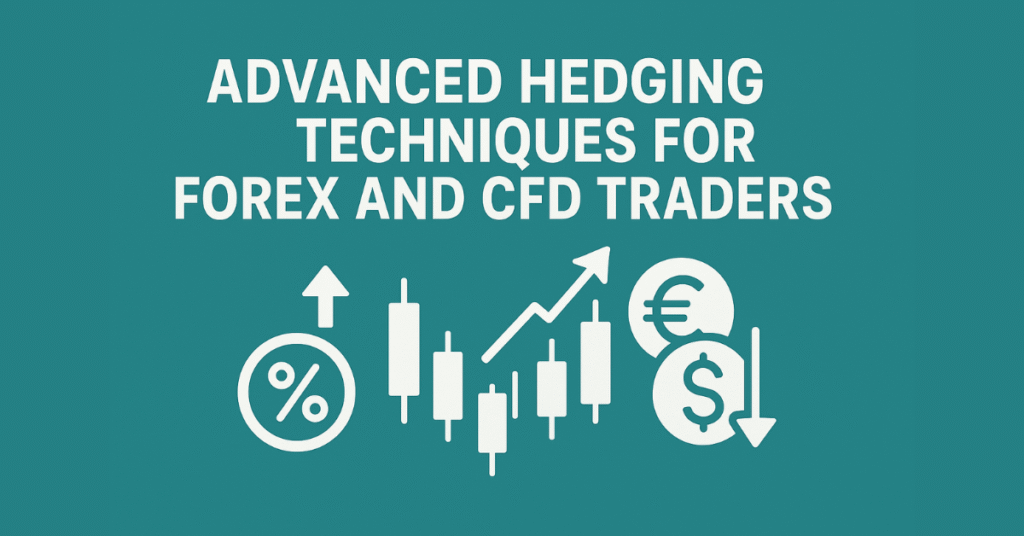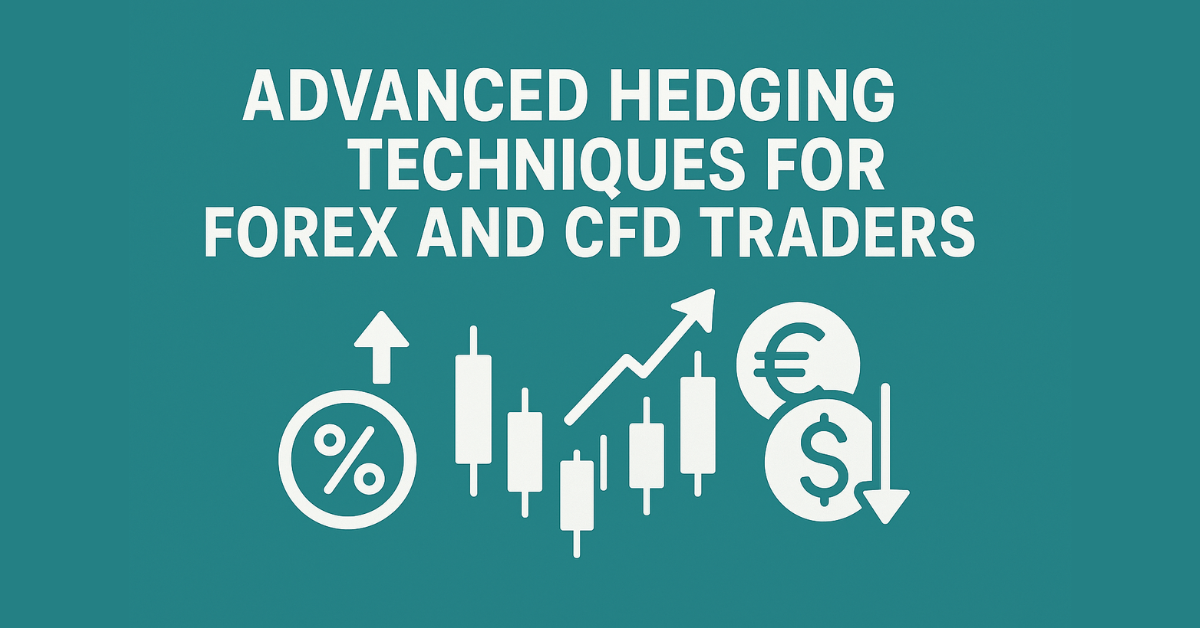
Hedging is a key strategy in managing market risk for Forex and CFD traders. In volatile markets, it provides a way to protect capital, limit downside exposure, and maintain flexibility in trading portfolios. This guide offers a comprehensive overview of hedging in forex, explores forex hedging examples, introduces simple hedging strategies, and clarifies the distinction between hedging vs speculation. By understanding these methods, traders and brokerages can implement advanced risk management strategies to safeguard their investments and optimize trading outcomes to safeguard their investments and optimize trading outcomes. For a deeper foundation on capital protection and control measures, explore our detailed guide on risk management in forex to understand how professional traders plan for uncertainty.
What Is Hedging in Forex
Hedging in forex refers to taking a position in one market to offset the potential losses of another position. The goal is to minimize risk, especially in volatile currency pairs, without necessarily aiming to generate profit from the hedge itself.
Unlike speculative trades, which aim to profit from market movements, hedging is primarily about protection. For example, a trader holding a long position in EUR/USD may open a short position in the same pair to protect against sudden adverse movements.
Key characteristics of forex hedging include reducing exposure to adverse price movements, involving multiple instruments such as CFDs, futures, or options, protecting capital while maintaining flexibility in trading strategy, and allowing traders to remain active in the market even during uncertainty.
Hedging is widely used by institutional traders, corporate treasury departments, and sophisticated retail traders to manage risk without exiting positions prematurely.
Importance of Hedging for Traders
Hedging provides several crucial benefits for traders managing Forex and CFD portfolios.It forms part of broader trading risk strategies that balance opportunity with capital safety through diversification and position control.
Risk reduction is the primary advantage; by offsetting positions, traders can reduce potential losses in volatile markets. Portfolio protection allows traders to maintain long-term positions while limiting short-term downside exposure. Hedging also offers flexibility, enabling traders to participate in multiple positions without the risk of a single trade jeopardizing their entire portfolio. Lastly, it provides a psychological advantage, reducing stress and emotional decision-making, as traders know protective measures are in place.
Effective hedging enables traders to focus on strategic decisions rather than reacting impulsively to market swings.
Basic Principles of Forex Hedging
Before implementing advanced strategies, traders should understand the core principles that make hedging effective. Correlation awareness ensures that the hedge is correlated with the exposure being protected. Defined risk parameters include clear stop-loss levels and maximum acceptable loss. Instrument selection involves using currency pairs, CFDs, futures, or options to create effective hedges. Cost consideration involves accounting for transaction costs, spreads, or financing charges in the hedging strategy.
A strong foundation in these principles ensures that hedging strategies are applied systematically rather than arbitrarily.Incorporating these principles within structured risk management in forex frameworks helps traders build consistency and reduce unnecessary exposure.
Simple Hedging Strategies
Even traders new to hedging can implement simple strategies that protect positions effectively.
Direct hedging involves opening an equal and opposite position in the same currency pair. For example, if you are long EUR/USD, opening a short position in the same pair can offset potential losses. The advantages include immediate protection against adverse moves and ease of implementation, while limitations include restricted profit potential and possible extra transaction costs.
Multiple-currency hedging uses correlated currency pairs to protect against risk. For instance, if you hold a long position in GBP/USD, you might take a short position in EUR/USD to reduce exposure to USD movements. The advantages are reduced overall portfolio risk and the ability to exploit market correlations, while limitations include the need for careful analysis and management complexity.
Options-based hedging uses currency options to provide a flexible hedge by giving the right, but not the obligation, to buy or sell a currency at a predetermined price. This strategy limits downside risk while keeping upside potential intact. Advantages include limited risk exposure and preserved profit potential, while limitations involve understanding option pricing and higher costs.
CFD hedging uses contracts for difference to open positions in Forex, indices, or commodities without owning the underlying asset. This provides flexibility to hedge existing positions in the spot market. Advantages include high flexibility and low capital requirements, while limitations involve potential overnight financing costs and increased complexity with multiple positions.
Advanced Hedging Techniques
Once traders are comfortable with basic methods, advanced hedging strategies can further improve risk management. These strategies often involve multiple instruments, dynamic position sizing, or algorithmic approaches.
Cross-hedging protects positions in one asset by taking a position in a correlated, but not identical, asset. For example, a trader exposed to USD/JPY might hedge using AUD/JPY based on correlation patterns. Advantages include reducing risk in assets with limited hedging instruments and providing strategic flexibility, while limitations involve advanced analysis and varying hedge effectiveness over time.
Hedging with futures allows traders to lock in prices for future delivery, providing protection against adverse market moves. Forex traders can use currency futures to hedge spot positions. Advantages include strong protection against price swings and transparency, while limitations include margin requirements and reduced flexibility compared to spot hedges.
Dynamic hedging involves adjusting hedge positions continuously based on market conditions. Algorithmic trading platforms can execute dynamic hedges in real time, ensuring that risk exposure is maintained within predefined limits. Advantages include ongoing risk management and adaptation to changing market conditions, while limitations include sophisticated tools and increased operational complexity.
Portfolio hedging focuses on reducing risk across multiple positions or asset classes. By combining long and short positions, traders can minimize exposure to currency, index, or commodity volatility. Advantages include comprehensive risk control and managing correlated risks across markets, while limitations include the need for careful portfolio analysis and potential reduction in profit if hedges offset profitable trades.
Forex Hedging Examples
Practical examples help traders understand how hedging can work in real scenarios.
In a direct hedge in EUR/USD, a trader holds a long position of 10,000 EUR/USD at 1.1000 and opens a short position of 10,000 EUR/USD at the same level. If the price falls to 1.0950, losses on the long position are offset by gains on the short position.
A correlated currency hedge example involves a trader long on GBP/USD who anticipates USD volatility. They take a short position in EUR/USD to reduce USD exposure. Fluctuations in USD partially offset losses in GBP/USD, protecting capital.
An options hedge example involves a trader owning a long USD/JPY position who buys a put option on USD/JPY. If the market falls, the option gains value, compensating for losses on the spot position.
These examples demonstrate how different instruments and strategies can be used to manage risk in Forex and CFD markets effectively.
Hedging vs Speculation
Understanding the difference between hedging vs speculation is critical for traders.
Hedging focuses on risk reduction. Positions are taken to protect existing exposure and minimize potential losses. Profit is secondary to protection. Speculation focuses on profit. Traders take positions to benefit from market movements, often with higher risk exposure. While speculation can generate significant returns, hedging ensures stability and risk control, especially in volatile markets. Successful traders often balance hedging and speculation to optimize portfolio performance.
Simple Hedging Strategies for New Traders
Even beginners can implement straightforward strategies to manage risk effectively.Mini or micro positions allow traders to trade smaller sizes to limit exposure. Stop-loss orders should always be set to protect against unexpected moves. Awareness of correlations between traded pairs reduces overall risk. Partial hedges protect a portion of the portfolio while leaving some positions exposed for profit potential. Starting with simple hedges allows traders to learn the mechanics of risk management before moving to advanced techniques.
Integrating Hedging Into Trading Risk Strategies
Hedging is most effective when it is part of a broader trading risk strategy that includes clear position sizing and diversification. This integration supports how to reduce risk in trading by ensuring that protective measures complement growth-oriented trades. This includes position sizing, determining trade sizes to align with account balance and risk tolerance. Diversification spreads trades across multiple instruments to reduce single-market exposure. Regular monitoring adjusts hedges and positions based on changing market conditions. Risk-reward analysis ensures that hedges do not overly reduce profit potential. By integrating hedging into comprehensive risk management frameworks, traders can protect capital while maintaining growth opportunities.
Best Practices for Hedging in Forex
To implement effective hedging, traders and portfolio managers should follow these best practices. Understand the correlations between currency pairs and instruments. Use swap-free or low-cost instruments to reduce hedging expenses. Continuously monitor market conditions to adjust hedges dynamically. Keep clear records of hedging transactions for performance evaluation. Avoid over-hedging, which can reduce overall profit potential. Regular performance reviews and clear stop-loss placements also contribute to managing trading losses effectively while keeping risk levels under control. Adhering to these practices ensures that hedging remains a protective tool rather than a speculative gamble.
Conclusion
Hedging in forex is an essential risk management technique that allows traders to limit losses while maintaining flexibility in their portfolios. From basic approaches like direct hedges to advanced techniques like dynamic and portfolio hedging, these strategies provide effective protection in volatile markets.
By understanding forex hedging examples, implementing simple hedging strategies, and differentiating between hedging vs speculation, traders can manage risk more effectively and make informed decisions. Integrating hedging into a structured risk framework ensures capital preservation, reduces stress, and improves long-term profitability in Forex and CFD markets.For traders seeking to master this balance, visit Comprehensive Guide to Forex Risk Management: From Basics to Advanced — your essential resource for professional-level control of trading risk.






